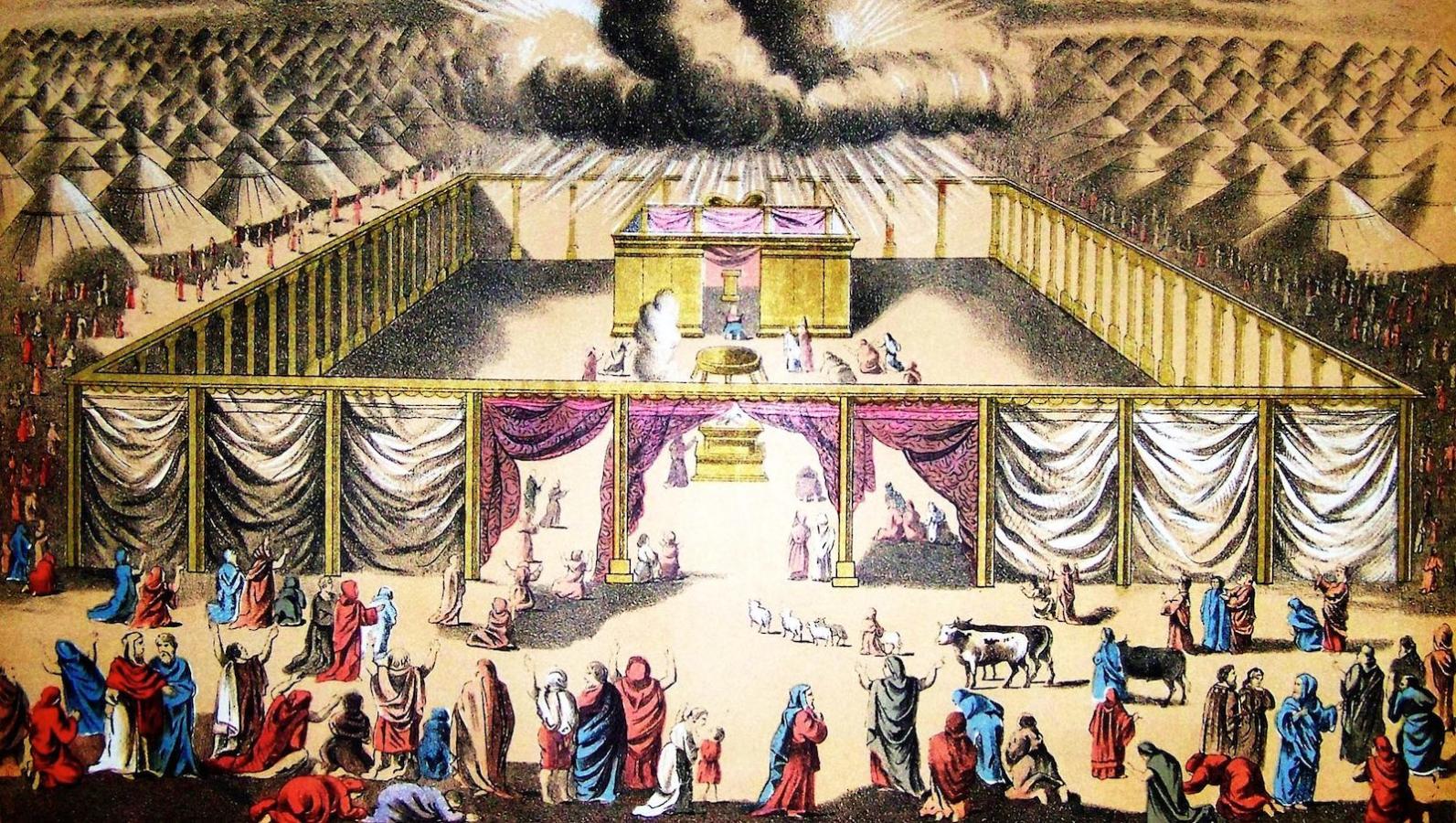Commentary on Parashat Terumah, Exodus 25:1-27:19; Numbers 28:9-15; Exodus 30:11-16
In Parashat Terumah, the Israelites receive the blueprints for a majestic tent–the mishkan–that will eventually house the magnificent Ark of the Covenant. As we read the vivid description, we can picture its grandeur. During the Israelites’ journeys through the desert, the mishkan serves as a portable temple, with the home of God’s indwelling, the Ark, at its center (Exodus 25:8). The Israelite tribes camp around it, placing it at the heart of the Nation.
While the detailed beauty of the Ark sounds stunning, the medieval commentator Abravanel wonders about its design. The first of the Divine Laws prohibits graven images of any kind, replications of any being, heavenly or earthly (Exodus 20:4). But upon the cover of the ark perch two cherubim, winged human forms (Exodus 25:20). It would seem that by including these forms, God is breaking God’s own Law.
From the Human Encounter
There is a possible resolution to this seeming contradiction in the very details of space and shape that make this parashah and its focus on design so fascinating. “From above the cover,” says God (Exodus 25:22), “from between the two cherubim that are on top of the Ark of the Covenant,” God will meet with humanity. The voice of God emerges not from the mouth of any graven image, but from the empty space between two faces.
From the place of human encounter emerges the Divine Voice. Certainly, in every act of true listening, of honest speaking, and thus in every act of compassion, in every heartfelt encounter, in every ethical interaction we can hear God’s voice.
With your help, My Jewish Learning can provide endless opportunities for learning, connection and discovery.
In other words, if idolatry is to hear the voice of God emerging from a block of gold, then the opposite of idolatry is to see God’s face in every human being, to hear God’s voice emerging from the relationship of any two beings, face to face, eye to eye, ish el achiv–from one person to another (Exodus 25:20).
Yet the presence of the sacred in human interactions does not occur automatically in the encounter. There is a crucial foundation upon which this relationship takes place, a vital basis where our relationships must be rooted.
Taking a closer look at who or what resides in the mishkan, we find that God is not, in fact, the tent’s primary resident. Rather, at the center of this sacred structure is the Law–the two stone tablets chiseled during Revelation at Sinai, when the human and heavenly worlds met.
The Mishkan as Model
Though the tablets contain only ten laws, they are the symbol of the covenantal relationship that guides Israel’s every behavior. The five laws on the right-hand tablet guide us in the realm of ben adam l’Makom–between humans and the Omnipresent–and the five laws on the left-hand tablet guide us in the realm of ben adam l’chavero—
between humans and their brethren. In that sense, the core of the mishkan is a monument to Divine ethical vigilance.
The Ark, then, is not a platform for God crowned by two idols, but a complex model for Divine relationship. God dwells among us when we build relationships that are founded on morality and focused on the encounter.
The mishkan, likewise, is a model. The Ark sits at its core, representing righteous relationship, and the mishkan places this relationship in the context of a building, an institution. For the nascent Nation of Israel, the mishkan and its Ark was not only the site of religious service, but also the seat of legislation (Deuteronomy 17:9), of conflict resolution (Exodus 22:10), and even of the military (Numbers 10:35).
It is not enough to strive for correct relationships one-on-one or even within our own homes–the mishkan challenges us to build our most important institutions in this same model.
To actualize its lesson, we must demand of our own governments an equivalent commitment to both the human encounter and the ethical foundations upon which it must rest. The parashah’s attention to detail speaks to the kind of vigilance our own society must have, ensuring that this ethical-relational commitment is present in our governing structures at all levels, in every aspect.
We must use this as our model for the way elections are carried out, the way checks and balances are calculated, the commitment to truthful reports in all public communications, and the way domestic and international policies are developed and implemented. All systems should exemplify this commitment, ensuring the safety, freedom, and dignity of all people.
We invoke the mishkan by studying it, by building our world in its image. By choosing to adopt its particular architectural style and the values that it embodies, we make ourselves in the image of the Master Architect.
Provided by American Jewish World Service, pursuing global justice through grassroots change.
ark
Pronounced: ark, Origin: English, the place in the synagogue where the Torah scrolls are stored, also known as the aron kodesh, or holy cabinet.



